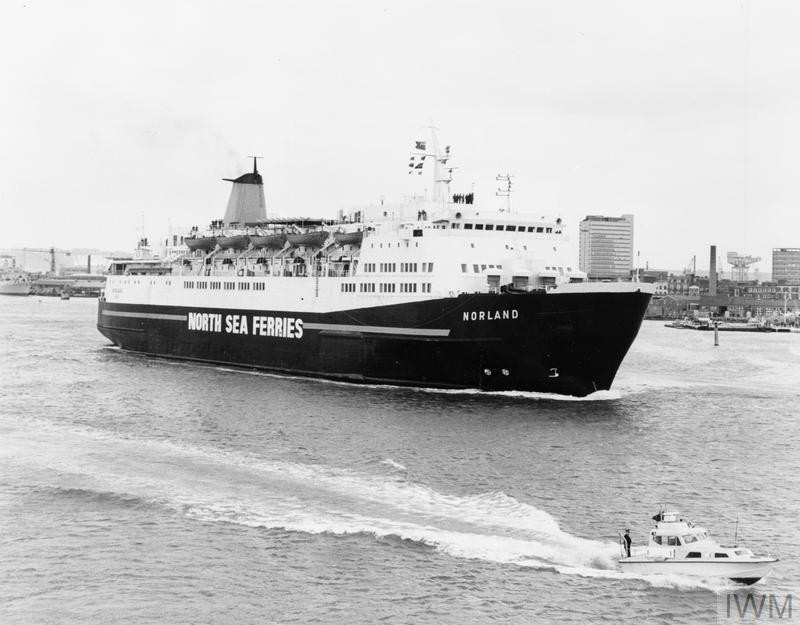Operation Paraquet was wrapped up on Monday 26 April 1982 when the final pocket of Argentine resistance on South Georgia – a small detachment at Leith who had refused to surrender the day before when requested to over the radio – threw in the towel in the morning as frigate HMS Plymouth and ice patrol ship HMS Endurance approached their position.
That mean the focus of Operation Corporate swung back to the ultimate objective of taking back the Falkland Islands from Argentinian invaders, and once again there was plenty of activity to show that the UK was ready for the challenge.
The final major element of the amphibious group – Landing Platform Dock HMS Intrepid – sailed from the UK after a rapid turnaround in her fortunes.
She and sister ship HMS Fearless had been slated for deletion in 1981, and Intrepid was actually in the early stages of the decommissioning process when Argentina invaded the Falkland Islands on 2 April 1982.
Instead, she was quickly brought back up to operational status at Portsmouth Naval Base and left on her passage south on 26 April.
Another departure from the South Coast on 26 April was submarine HMS Onyx, the only diesel-powered Royal Navy boat to take part in the Falklands campaign.
She sailed from HMS Dolphin in Gosport, the home of the Submarine Service, with a full load of torpedoes and a special diving chamber – her small size relative to the nuclear submarines in the Fleet made her better-suited to carrying out special forces operations around the coasts of the islands in shallower waters.
North Sea Ferries’ 27,000-tonne roll-on, roll-off ship MV Norland, which normally operated on routes between Hull and Rotterdam or Zeebrugge, also left Portsmouth as a STUFT vessel (ship taken up from trade) on that Monday, carrying around 800 troops of 2nd Battalion, The Parachute Regiment (2 Para) with her.
RFA tanker Bayleaf joined the exodus south when she sailed from Portland in Dorset on 26 April on what was her maiden voyage.
The 37,000-ton Leaf-class tanker had been ordered from Cammell Laird in Birkenhead in 1973 and laid down as Hudson Sound in 1975, but the firm that ordered her ran into difficulties and she and her three sisters (which later became RFAs Appleleaf, Brambleleaf and Orangeleaf) were laid up.
Having been ‘re-ordered’ for charter to the MOD in December 1980, she was finally launched at the end of October 1981 and completed on 25 March 1982 after brief trials, at which point she joined the RFA and was renamed Bayleaf.
Just a month later the support tanker was on her way to Ascension Island via Gibraltar, in company with assault ship HMS Intrepid.
Another tanker, BP Thames Tanker Company’s MV British Avon, departed from Portsmouth on 26 April, on the first of two round trips between the UK and the Falklands carrying oil for RFA tankers in theatre.
Small Fleet tanker RFA Blue Rover reached Ascension Island on 26 April, but dropped anchor for less than a day before continuing her journey south.
Also arriving at Ascension Island that day was Fleet replenishment tanker RFA Tidepool , which had been recalled just as she was being handed over to the Chilean navy in South America at the beginning of April.
The ship spent ten days at Ascension, during which time she embarked two Westland Wessex HU5 commando assault helicopters of 845 Naval Air Squadron.
Somewhere out at sea in the South Atlantic, RFA Appleleaf was relieved of her ‘motorway tanking’ duties – effectively acting as a mobile service station – and started to make her way towards the Falkland Islands where she would spend more than a month replenishing ships of the Carrier Battle Group.
That formation of ships was also southbound, and less than 1,000 miles from their destination, but ran into more foul weather on the Monday – rising winds, falling temperatures and worsening sea states saw the group reducing speed once again, and their arrival in the soon-to-be-enforced Total Exclusion Zone (TEZ) was slipped back a day.
Nevertheless, despite the poor conditions, the carrier group managed to carry out a major anti-air warfare exercise on 26 April in anticipation of the threat that could materialise around the islands.
Replenishment ship RFA Fort Austin, having been acting as a support ship for the South Georgia group, had crossed back to the Falkland Islands and entered the area of the TEZ on 26 April, where she awaited the arrival of the ships of the Carrier Battle Group.
Finally (for now) the first ship to leave the UK for the Falklands – 1,400-ton ocean-going tug RMAS Typhoon – left her anchorage at Ascension Island and plotted a course to Tristan da Cunha en route to South Georgia, where (amongst other duties) she would play her part in the attempt to salvage damaged Argentine submarine ARA Santa Fe.
Typhoon, fitted for firefighting, salvage and ocean rescue duties, was originally an RFA vessel but transferred to the Royal Maritime Auxiliary Service before the invasion of the Falklands.
Today’s image from the Imperial War Museum collection (© IWM FKD 41) shows ro-ro ferry MV Norland leaving Portsmouth for the South Atlantic on 26 April 1982 carrying some 800 men of the 2nd Battalion, The Parachute Regiment.
* These posts can only give a brief sense of what was a complex and fast-moving situation 40 years ago, and cannot cover the involvement of every ship, squadron and unit in detail – for a much more comprehensive account see naval-history.net at https://www.naval-history.net/NAVAL1982FALKLANDS.htm
